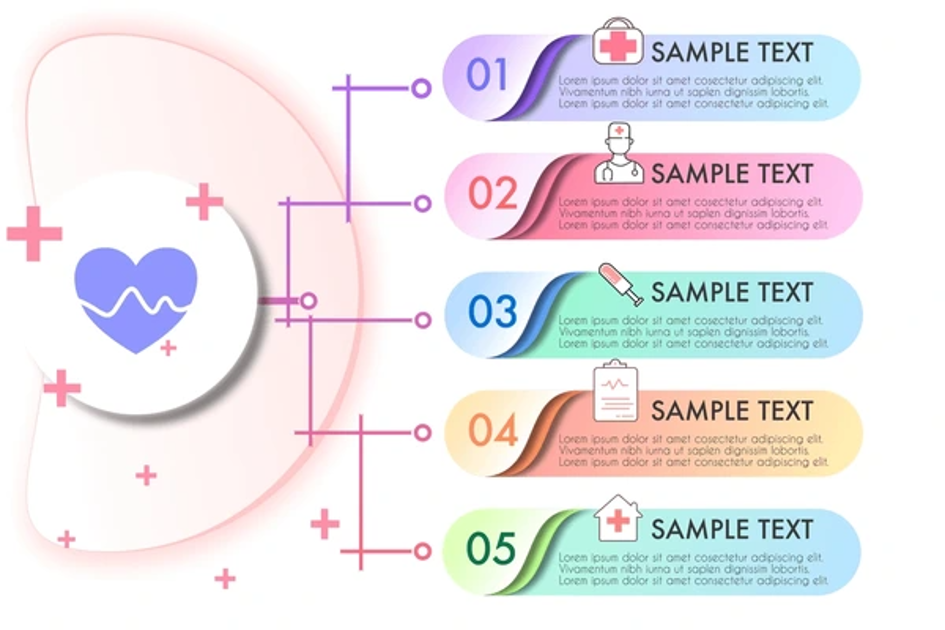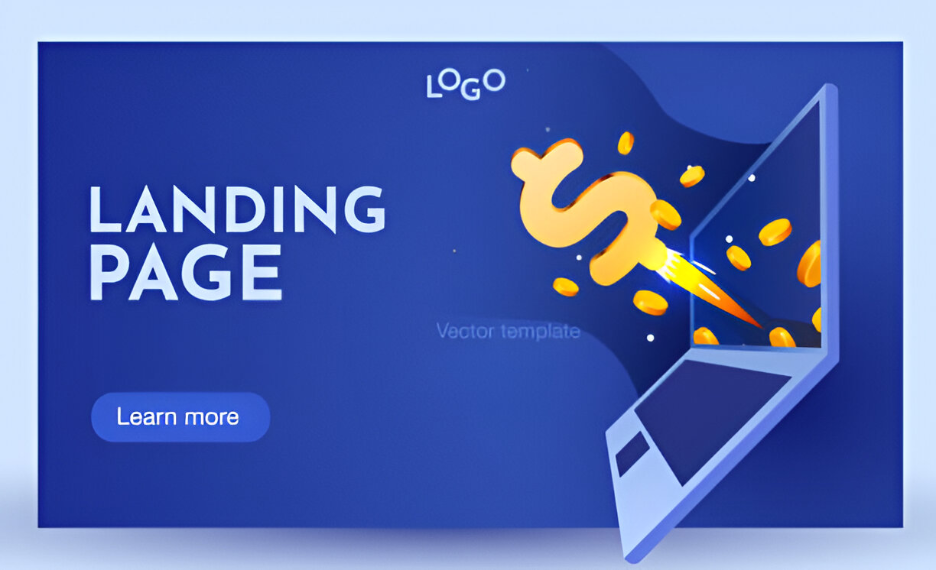Banishing Website Boredom: Engaging Design Tips for 2024
Capturing and retaining visitors' attention is more crucial than ever in the digital landscape of 2024. This blog delves into essential design strategies that can transform a lackluster site into an engaging online experience. We will explore innovative approaches, from incorporating dynamic visuals and interactive elements to optimizing user experience through intuitive navigation.
The significance of responsive design and how emerging trends can breathe new life into static websites will also be discussed. Whether you're a seasoned web designer or just starting, these tips will help you create compelling designs that captivate visitors and encourage them to stay, explore, and engage with your content.
The Importance of Engaging Design in Today’s Digital Landscape
Capturing User Attention
In a world where information is abundant and attention spans are fleeting, engaging design plays a pivotal role in capturing user attention. A visually appealing website can make a strong first impression, encouraging visitors to explore further. Incorporating vibrant graphics, attractive layouts, and an intuitive interface ensures that users are not just browsing but actively engaging with the content provided.
Enhancing User Experience
User experience (UX) is at the forefront of a successful digital presence. Engaging design prioritizes the needs and preferences of users, creating a seamless journey through the website. Strategies such as clear navigation, fast loading times, and mobile responsiveness contribute to a positive experience, ultimately fostering customer satisfaction and loyalty. When users find a site easy to navigate and enjoyable to use, they are more likely to return.

Fostering Accessibility and Inclusivity
Engaging design goes beyond aesthetics; it also encompasses accessibility. It is vital to create designs that are inclusive and cater to the diverse needs of all users, including those with disabilities. By implementing features such as alt text for images, keyboard navigation, and contrasting color schemes, designers can ensure a broader audience can fully engage with the content.
Staying Competitive
As the digital landscape evolves, businesses must stay ahead of the curve to remain competitive. An engaging design not only differentiates a website from its competitors but also adapts to current trends and user expectations. By continuously innovating and experimenting with design elements, businesses can capture market interest and maintain a strong online presence.
Harnessing Dynamic Visuals to Capture User Attention
The Power of Animation
Incorporating animation into web design is one of the most effective ways to capture user attention. Subtle animations, such as hover effects or loading animations, can guide users through the site, making interactions more engaging. Moreover, animations can highlight important content, driving focus to key areas while providing a sense of liveliness.
Video Backgrounds and Hero Images
Using video backgrounds or striking hero images on landing pages can instantly capture attention. These dynamic visuals draw users in within a matter of seconds, eliciting emotional responses that can lead to increased engagement. However, it’s crucial to ensure that such elements do not detract from the site’s loading speeds or overall usability.
Interactive Elements
Interactive elements, like quizzes, polls, or embedded games, offer users a chance to engage directly with the content. This active participation fosters a deeper connection with the site and encourages users to spend more time exploring. By incorporating such features, designers can create memorable experiences that resonate beyond passive viewing.
Utilizing Infographics
Infographics combine visual and textual information in a digestible format, making complex data more relatable. By using eye-catching graphics and clear layouts, infographics can effectively convey messages and keep users engaged. This approach not only boosts information retention but also encourages sharing across social media platforms.
By harnessing dynamic visuals, designers can create a captivating digital landscape that attracts and retains user attention, ultimately contributing to a more engaging online experience.
The Power of Interactive Elements in Boosting Visitor Engagement
Interactive elements are a cornerstone of effective web design, fundamentally transforming the way users engage with content. By encouraging active participation, these features not only capture attention but also enhance the overall user experience.
Increasing User Retention
One of the most significant advantages of incorporating interactive elements is their ability to increase user retention. When visitors can actively participate through polls, quizzes, or interactive infographics, they are more likely to stay on the site longer. This extended engagement increases the chances of revisiting the site in the future and enhances brand loyalty.

Enhancing Emotional Connections
Interactive elements create an opportunity for users to forge emotional connections with the content. By tapping into curiosity and playfulness, activities such as gamified experiences or user-generated content prompts encourage users to invest time and effort into their interactions. This emotional investment cultivates a deeper bond with the brand.
Gathering Valuable Insights
Implementing interactive features like feedback forms, surveys, or even simple polls can provide valuable insights into user preferences and behavior. This data allows businesses to tailor their offerings and improve user experience based on real-time feedback, ensuring the content remains relevant and engaging.
Encouraging Social Sharing
When users engage in interactive experiences, they are more inclined to share their experiences on social media platforms. This sharing not only amplifies the reach of the website but also promotes organic interaction among a broader audience. Engaging content enhances the likelihood of virality, bringing in new visitors and potential customers.
Promoting Learning and Retention
Interactive elements can facilitate better learning experiences. When users engage with interactive content, such as tutorials or simulations, they can grasp concepts more effectively. This hands-on approach promotes information retention, making it easier for users to recall and apply what they’ve learned.
Incorporating interactive elements into web design is not just about enhancing visual appeal; it is about creating an immersive experience that resonates with users, ultimately leading to increased engagement and long-lasting relationships.
Crafting Intuitive Navigation for a Seamless User Experience
Understanding User Needs
To design an effective navigation system, it is crucial to understand the needs and expectations of the target audience. Conducting user research, including surveys and usability testing, can provide insights into how users typically navigate similar websites. This understanding helps in structuring content and labels that resonate with users, making information easy to find.
Simplifying Menu Structures
A cluttered menu can overwhelm users, leading to frustration and abandonment. Therefore, simplifying menu structures is essential. Designers should aim to minimize the number of top-level categories, grouping related items under clear subcategories. This hierarchical approach not only makes navigation straightforward but also allows users to intuitively browse through content without feeling lost.
Employing Descriptive Labels
Labels are one of the most critical components of navigation. Using descriptive and straightforward labels helps users understand what they can expect when clicking on a link. Avoid jargon or overly clever titles; instead, opt for clear terms that convey straightforward concepts, ensuring all users can navigate effortlessly.
Incorporating Breadcrumb Trails
Breadcrumb trails provide a navigational aid that helps users understand their current location within a site structure. By showing the path taken to reach a particular page, these navigational cues can enhance user orientation and make it easy to backtrack without needing to use the browser's back button. This feature is particularly beneficial for websites with extensive content.
Mobile Responsiveness
With the increasing use of mobile devices, crafting navigation that works seamlessly across all screen sizes is vital. Designers should adopt responsive navigation menus, such as collapsible drop-downs or hamburger menus, which allow users to navigate easily on smaller screens without cluttering the interface.
Continuous Testing and Improvement
Effective navigation design is an iterative process. Regularly testing navigation elements and gathering user feedback allows designers to identify pain points and make continuous improvements. A/B testing can also help determine which design elements perform best, ensuring the navigation remains user-friendly over time.
By carefully crafting intuitive navigation systems, designers can create seamless user experiences that enhance satisfaction and encourage prolonged engagement.
The Role of Responsive Design in Enhancing Accessibility and Appeal
In today's digital landscape, responsive design plays a critical role in ensuring that websites are accessible and appealing to a diverse range of users. By adapting to various screen sizes and devices, responsive design promotes an inclusive user experience that caters to the needs of all audiences.
Ensuring Access for All Users
Responsive design fundamentally addresses accessibility by allowing users with different devices—whether desktop computers, tablets, or smartphones—to access content seamlessly. By offering a consistent experience across platforms, websites can engage a wider audience, including individuals with disabilities who may rely on mobile technology.
Improving Usability
A key aspect of responsive design is its focus on enhancing usability. By fluidly adapting layouts and content to fit any screen size, users find information easier to navigate and interact with. This intuitive user experience not only reduces frustration but also lowers bounce rates, as visitors are more likely to stay on the site if it functions well on their devices.

Boosting SEO Efforts
Search engines, including Google, favor responsive design as it provides a better user experience. Having a single, well-optimized URL for a website, regardless of the device used, means that search engines can crawl and index content more efficiently. This can result in improved search rankings and increased visibility, ultimately drawing more traffic to the site.
Enhancing Visual Appeal
Responsive design helps maintain the visual integrity of a website, making it visually appealing across all devices. By optimizing images, fonts, and layouts for different screens, users experience a cohesive and aesthetically pleasing presentation, which can enhance brand perception and loyalty.
Facilitating Future Growth
Web technologies and user behaviors are constantly evolving. A robust responsive design strategy prepares websites for future device developments and changes in user preferences. By investing in responsive design now, businesses can save time and resources in the long run, as they won't need to create separate versions of their sites for different platforms.
Responsive design is essential in enhancing both accessibility and appeal. By ensuring that websites function well across all devices, businesses not only improve user satisfaction but also strengthen their market presence in an increasingly competitive digital environment.
Integrating Emerging Trends to Revitalize Static Websites
As technology continues to advance at a rapid pace, static websites must adapt to remain relevant and engaging. By incorporating emerging trends, designers and developers can breathe new life into these traditional web platforms, enhancing user experience and functionality.
Embracing Progressive Web Apps (PWAs)
Progressive Web Apps (PWAs) combine the best of both web and mobile applications, providing users with a faster, more reliable, and engaging experience. By enabling features like offline usage, push notifications, and home screen installation, PWAs can transform static websites into dynamic platforms that retain users’ attention longer and encourage repeat visits.
Implementing Interactive Elements
Static websites can benefit greatly from interactive elements, such as quizzes, polls, and user-generated content. Incorporating these features not only engages users but also encourages them to spend more time on the site. By fostering interaction, businesses can collect valuable feedback and insights from their audience, ultimately improving content and offerings.
Leveraging Artificial Intelligence and Chatbots
Integrating AI-driven chatbots can enhance user experience on static websites by providing real-time assistance and support. These intelligent systems can answer frequently asked questions, guide users to relevant information, and assist with navigation, ensuring that visitors feel valued and understood. Furthermore, chatbots can collect user data to help inform content strategy and personalization efforts.
Utilizing Video Content
The integration of video content can significantly enhance the visual appeal of static websites. Promotional videos, tutorials, and engaging storytelling can convey messages more effectively than text alone. By embedding responsive video players, designers ensure that content remains accessible across devices, creating an immersive experience that captures user interest.
Adopting Minimalistic Design Trends
A shift toward minimalistic design can rejuvenate static websites, promoting clarity and focus. By prioritizing whitespace, clean typography, and simple navigation, designers can help users engage with content without distractions. This approach not only enhances user experience but also aligns with modern aesthetic preferences, making websites more appealing to contemporary audiences.
By integrating these emerging trends into static websites, designers can create an engaging and user-centered experience that meets the evolving demands of digital consumers. Cherishing innovation while respecting the core functionality of static sites ensures they remain valuable assets for businesses in the digital age.
Contact LevelUp Digital Solutions Today!
Ready to elevate your online presence with cutting-edge responsive design and modern web solutions? At LevelUp Digital Solutions , we specialize in transforming static websites into engaging, user-friendly experiences tailored to your audience's needs. Don’t let your website fall behind in the digital landscape—reach out to us today! Contact us to discuss how our innovative strategies can help your business thrive and ensure you stay ahead of the competition. Let's work together to create something exceptional!


















